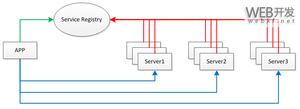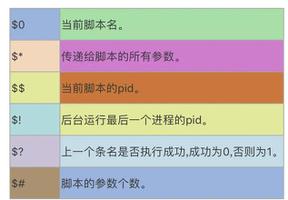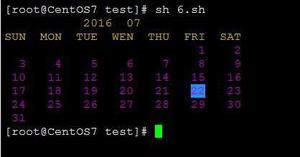pandas数据处理进阶详解
一、pandas的统计分析
1、关于pandas 的数值统计(统计detail 中的 单价的相关指标)
import pandas as pd
# 加载数据
detail = pd.read_excel("./meal_order_detail.xlsx")
print("detail :\n", detail)
print("detail 的列索引名称:\n", detail.columns)
print("detail 的形状:\n", detail.shape)
print("detail 数据类型:\n", detail.dtypes)
print("amounts 的最大值:\n",detail.loc[:,'amounts'].max())
print("amounts 的最小值:\n",detail.loc[:,'amounts'].min())
print("amounts 的均值:\n",detail.loc[:,'amounts'].mean())
print("amounts 的中位数:\n",detail.loc[:,'amounts'].median())
print("amounts 的方差:\n",detail.loc[:,'amounts'].var())
print("amounts 的describe:\n",detail.loc[:,'amounts'].describe())
# 对于两列的统计结果
print("amounts 的describe:\n",detail.loc[:,['counts','amounts']].describe())
print("amounts 的describe:\n",detail.loc[:,['counts','amounts']].describe())
print("amounts 的describe:\n",detail.loc[:,'amounts'].describe())
print("amounts 的describe:\n",detail.loc[:,'counts'].describe())
print("amounts 的极差:\n",detail.loc[:,'amounts'].ptp())
print("amounts 的标准差:\n",detail.loc[:,'amounts'].std())
print("amounts 的众数:\n",detail.loc[:,'amounts'].mode()) # 返回众数的数组
print("amounts 的众数:\n",detail.loc[:,'counts'].mode()) # 返回众数的数组
print("amounts 的非空值的数目:\n",detail.loc[:,'amounts'].count())
print("amounts 的最大值的位置:\n",detail.loc[:,'amounts'].idxmax()) # np.argmax()
print("amounts 的最小值的位置:\n",detail.loc[:,'amounts'].idxmin()) # np.argmin()
2、pandas对于非数值型数据的统计分析
(1)对于dataframe转化数据类型,其他类型 转化为object类型
detail.loc[:,'amounts'] = detail.loc[:,'amounts'].astype('object')
(2)类别型数据
detail.loc[:,'amounts'] = detail.loc[:,'amounts'].astype('category')
print("统计类别型数据的describe指标:\n",detail.loc[:, 'amounts'].describe())
(3)统计实例
## 在detail中 哪些菜品最火?菜品卖出了多少份?
# 若白饭算菜
detail.loc[:, 'dishes_name'] = detail.loc[:, 'dishes_name'].astype('category')
print("按照dishes_name统计描述信息:\n", detail.loc[:, 'dishes_name'].describe())
# 若白饭不算菜 ---把白饭删除,再统计
# drop labels ---行的名称, axis =0,inplace = True
# 行的名称??? 怎么获取----bool值
# 定位到白饭的行
bool_id = detail.loc[:, 'dishes_name'] == '白饭/大碗'
# 进行 获取行名称
index = detail.loc[bool_id, :].index
# 进行删除
detail.drop(labels=index, axis=0, inplace=True)
# 在进行转化类型
detail.loc[:, 'dishes_name'] = detail.loc[:, 'dishes_name'].astype('category')
# 在进行统计描述信息
print("按照dishes_name统计描述信息:\n", detail.loc[:, 'dishes_name'].describe())
# 看 在detail 中那个订单点的菜最多,点了多少份菜?
# 将 order_id 转化为类别型数据 ,再 进行describe
detail.loc[:, 'order_id'] = detail.loc[:, 'order_id'].astype("category")
# 统计描述
print("按照order_id统计描述信息为:\n", detail.loc[:, 'order_id'].describe())
二、pandas时间数据
- datetime64[ns] ---numpy 里面的时间点类
- Timestamp ---pandas 默认的时间点类型----封装了datetime64[ns]
- DatetimeIndex ---pandas 默认支持的时间序列结构
1、可以通过 pd.to_datetime 将时间点数据转化为pandas默认支持的时间点数据
res = pd.to_datetime("2016/01/01")
print("res:\n",res)
print("res 的类型:\n",type(res))
2、时间序列转化 --可以通过pd.to_datetime 或者pd.DatetimeIndex将时间序列转化为pandas默认支持的时间序列结构
res = pd.to_datetime(['2016-01-01', '2016-01-01', '2016-01-01', '2011-01-01'])
res1 = pd.DatetimeIndex(['2016-01-01', '2016-01-02', '2016-02-05', '2011-09-01'])
print("res:\n", res)
print("res 的类型:\n", type(res))
print("res1:\n", res1)
print("res1 的类型:\n", type(res1))
3、
import pandas as pd
# #加载数据
detail = pd.read_excel("./meal_order_detail.xlsx")
# print("detail :\n",detail)
print("detail 的列索引名称:\n", detail.columns)
print("detail 的形状:\n", detail.shape)
# print("detail 数据类型:\n",detail.dtypes)
print("*" * 80)
# 获取place_order_time列
print(detail.loc[:, 'place_order_time'])
# 转化为pandas默认支持的时间序列结构
detail.loc[:, 'place_order_time'] = pd.to_datetime(detail.loc[:, 'place_order_time'])
# print(detail.dtypes)
print("*" * 80)
# 获取该时间序列的属性---可以通过列表推导式来获取时间点的属性
year = [i.year for i in detail.loc[:, 'place_order_time']]
print("年:\n", year)
month = [i.month for i in detail.loc[:, 'place_order_time']]
print("月:\n", month)
day = [i.day for i in detail.loc[:, 'place_order_time']]
print("日:\n", day)
quarter = [i.quarter for i in detail.loc[:, 'place_order_time']]
print("季度:\n", quarter)
# 返回对象
weekday = [i.weekday for i in detail.loc[:, 'place_order_time']]
print("周几:\n", weekday)
weekday_name = [i.weekday_name for i in detail.loc[:, 'place_order_time']]
print("周几:\n", weekday_name)
is_leap_year = [i.is_leap_year for i in detail.loc[:, 'place_order_time']]
print("是否闰年:\n", is_leap_year)
4、时间加减
import pandas as pd
res = pd.to_datetime("2016-01-01")
print("res:\n", res)
print("res 的类型:\n", type(res))
print("时间推后一天:\n", res + pd.Timedelta(days=1))
print("时间推后一小时:\n", res + pd.Timedelta(hours=1))
detail.loc[:, 'place_over_time'] = detail.loc[:, 'place_order_time'] + pd.Timedelta(days=1)
print(detail)
## 时间差距计算
res = pd.to_datetime('2019-10-9') - pd.to_datetime('1996-11-07')
print(res)
5、获取本机可以使用的最初时间 和最后使用的时间节点
print(pd.Timestamp.min)
print(pd.Timestamp.max)
三、分组聚合
import pandas as pd
import numpy as np
# 加载数据
users = pd.read_excel("./users.xlsx")
print("users:\n", users)
print("users 的列索引:\n", users.columns)
print("users 的数据类型:\n", users.dtypes)
# 根据班级分组、统计学员的班级的平均年龄
# groupby 分组
# by ---指定分组的列,可以是单列 也可以是多列
# res = users.groupby(by='ORGANIZE_NAME')['age'].mean()
# 按照单列进行分组,统计多个列的指标
# res = users.groupby(by='ORGANIZE_NAME')[['age','USER_ID']].mean()
res = users.groupby(by=['ORGANIZE_NAME', 'poo', 'sex'])['age'].mean()
print(res)
# 利用agg
# 进行同时对age 求平均值、对userid 求最大值
# 只需要指定 np.方法名
print(users.agg({'age': np.mean, 'USER_ID': np.max}))
# 对age 和 USER_ID 同时分别求 和 和均值
print(users[['age', 'USER_ID']].agg([np.sum, np.mean]))
# 对age USER_ID 求取不同个数的统计指标
print(users.agg({'age': np.min, 'USER_ID': [np.mean, np.sum]}))
def hh(x):
return x + 1
# 自定义函数进行计算
# res = users['age'].apply(hh)
# res = users[['age','USER_ID']].apply(lambda x:x+1)
res = users['age'].transform(lambda x: x + 1)
# 不能进行跨列的运算
print(res)
四、透视表与交叉表
import pandas as pd
# 加载数据
detail = pd.read_excel("./meal_order_detail.xlsx")
print("detail :\n", detail)
print("detail 的列名:\n", detail.columns)
print("detail 的数据类型:\n", detail.dtypes)
# 获取时间点的日属性
# 必须pandas默认支持的时间序列类型
detail.loc[:, 'place_order_time'] = pd.to_datetime(detail.loc[:, 'place_order_time'])
# 以列表推导式来获取日属性
detail.loc[:, 'day'] = [i.day for i in detail.loc[:, 'place_order_time']]
# 透视表 是一种plus 版的分组聚合
# 创建一个透视表
# data dataframe数据
# values 最终统计指标所针对对象,要关心的数据主体
# index --按照index 进行行分组
# columns ---按照columns进行列分组
# aggfunc ---对主体 进行什么指标的统计
# res = pd.pivot_table(data=detail[['amounts','order_id','counts','dishes_name','day']],values='amounts',columns=['day','counts'],index=['order_id','dishes_name'],aggfunc='mean',margins=True)
# # print(res)
# res.to_excel("./hh.xlsx")
# 交叉表 mini版的透视表
# 如果只传index 与columns 统计这两列的相对个数
# res = pd.crosstab(index=detail['counts'],columns=detail['amounts'])
# values 必须和aggfunc同时存在
res = pd.crosstab(index=detail['order_id'],columns=detail['counts'],values=detail['amounts'],aggfunc='mean')
print(res)
五、案例
1、营业额案例
import pandas as pd
# detail 有时间数据
# 加载数据
detail = pd.read_excel("./meal_order_detail.xlsx")
print("detail :\n", detail)
print("detail 的列名:\n", detail.columns)
print("detail 的数据类型:\n", detail.dtypes)
# 计算每个菜品的销售额 ,增加到detail
detail.loc[:, 'pay'] = detail.loc[:, 'counts'] * detail.loc[:, 'amounts']
# print(detail)
# 获取时间点的日属性
# 必须pandas默认支持的时间序列类型
detail.loc[:, 'place_order_time'] = pd.to_datetime(detail.loc[:, 'place_order_time'])
# 以列表推导式来获取日属性
detail.loc[:, 'day'] = [i.day for i in detail.loc[:, 'place_order_time']]
# print(detail)
# 以 日 为分组 ,统计pay的sum
res = detail.groupby(by='day')['pay'].sum()
print(res)
# print(type(res))
df = pd.DataFrame(res.values, columns=['monty'], index=res.index)
print(df)
print(type(df))
2、连锁超市案例
import pandas as pd
# 加载数据
order = pd.read_csv("./order.csv", encoding='ansi')
print("order:\n", order)
print("order 的列索引:\n", order.columns)
# 1、哪些类别的商品比较畅销?
# 剔除销量 < 0 的数据 (保留销量 >0 的数据)
# 保存
bool_id = order.loc[:, '销量'] > 0
data = order.loc[bool_id, :] # 剔除异常数据之后的正常数据
print(data.shape)
print("*" * 80)
# 删除异常
# bool_id = order.loc[:,'销量'] <= 0
# index = order.loc[bool_id,:].index
#
# data = order.drop(labels=index,axis=0,inplace=False)
# 按照类别进行分组,统计销量的 和
# 进行dataframe或者series的值排序
# 如果series sort_values()直接按照seies的值进行排序
# 如果df 那么需要指定 按照哪一列进行排序,by= 列名
# 默认是升序ascending=True
# ascending=False 降序
# res = data.groupby(by='类别ID')['销量'].sum().sort_values(ascending=False)
#
# print(res)
# 2、哪些商品比较畅销?
# 分组聚合实现
# res = data.groupby(by='商品ID')['销量'].sum().sort_values(ascending=False).head(10)
#
# print(res)
# 透视表实现
# res = pd.pivot_table(data=data.loc[:, ['商品ID', '销量']], index='商品ID', values='销量', aggfunc='sum').sort_values(by='销量',
# ascending=False).head(
# 10)
# print(res)
# 3、求不同门店的销售额占比
# 提示:订单中没有销售额字段,所有需要新增一个销售额字段。增加字段后按照门店编号进行分组,然后计算占比。
# # 先计算销售额
# data.loc[:,'销售额'] = data.loc[:,'单价'] * data.loc[:,'销量']
#
# # 按照门店编号进行分组统计销售额的sum
# res = data.groupby(by='门店编号')['销售额'].sum()
# # print(res)
# # 计算所有的销售额总和
# all_ = res.sum()
#
# # print(all_)
# per_ = res / all_
#
# print("各个门店的销售额占比为:\n",per_.apply(lambda x:format(x,".2%")))
# a = 100.105
# print("%.2f"%a)
# print("{}%".format(2.0))
# 匿名函数
# print(lambda x:x+5) #
#
# def add(x):
# # return x+5
# 4、哪段时间段是超市的客流高峰期?
# 提示:需要知道每个时间段对应的客流量,但是订单表中既有日期又有时间,我们需要从中提出小时数,这里利用订单ID去重计数代表客流量。
# 先对订单去重
# subset 去重的那一列 的列名,可以是多列,多列的时候传列表
data.drop_duplicates(subset='订单ID', inplace=True)
# print(data.shape)
# 按照小时分组对订单ID进行统计数量
# 将成交时间转化为 pandas默认支持的时间序列类型
data.loc[:, '成交时间'] = pd.to_datetime(data.loc[:, '成交时间'])
# 获取小时属性,增加到data 中
data.loc[:, 'hour'] = [i.hour for i in data.loc[:, '成交时间']]
# print(data)
# 按照hour 分组 统计 订单ID数量
res = data.groupby(by='hour')['订单ID'].count().sort_values(ascending=False)
print(res)
以上是 pandas数据处理进阶详解 的全部内容, 来源链接: utcz.com/z/312375.html





